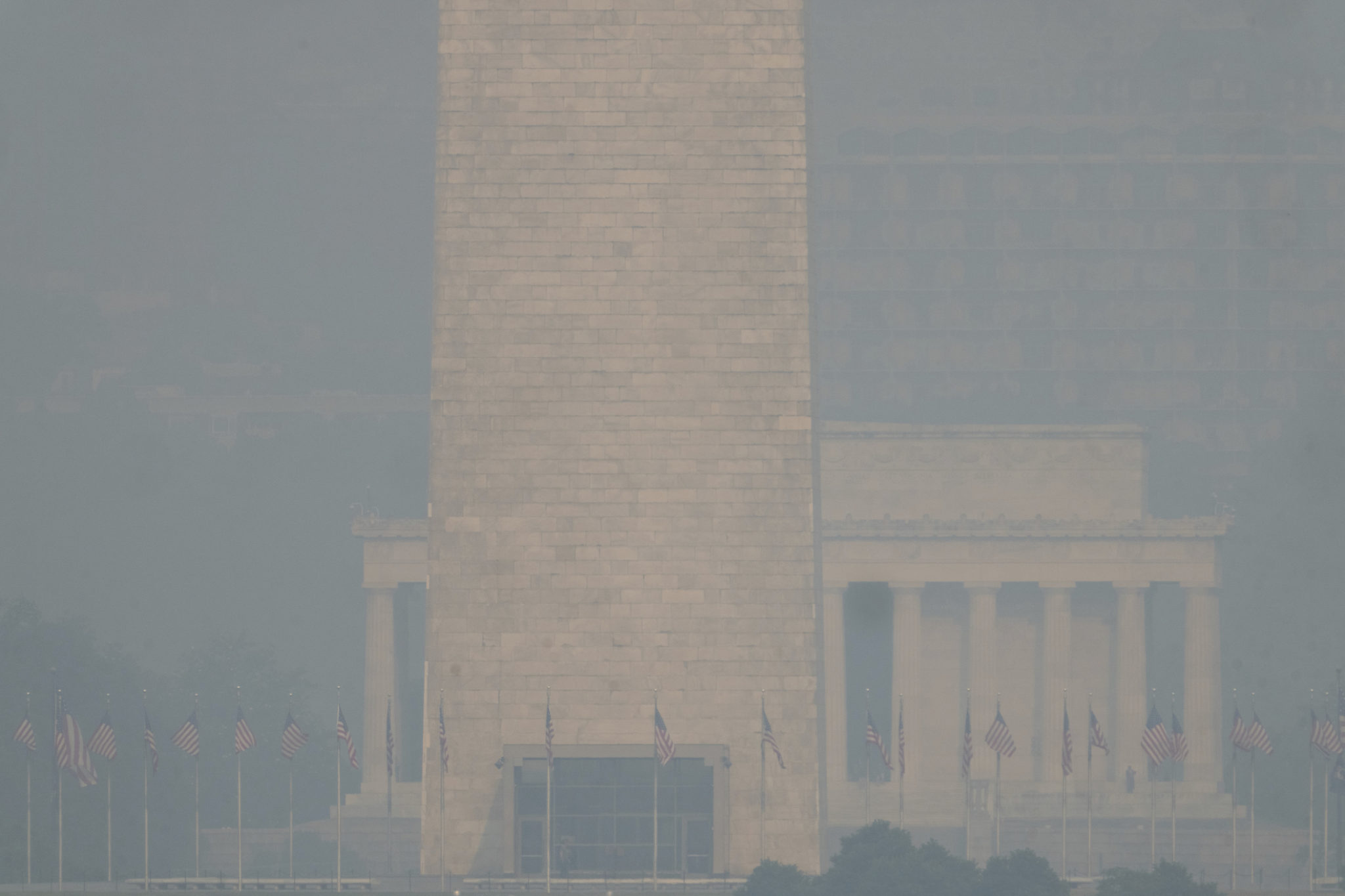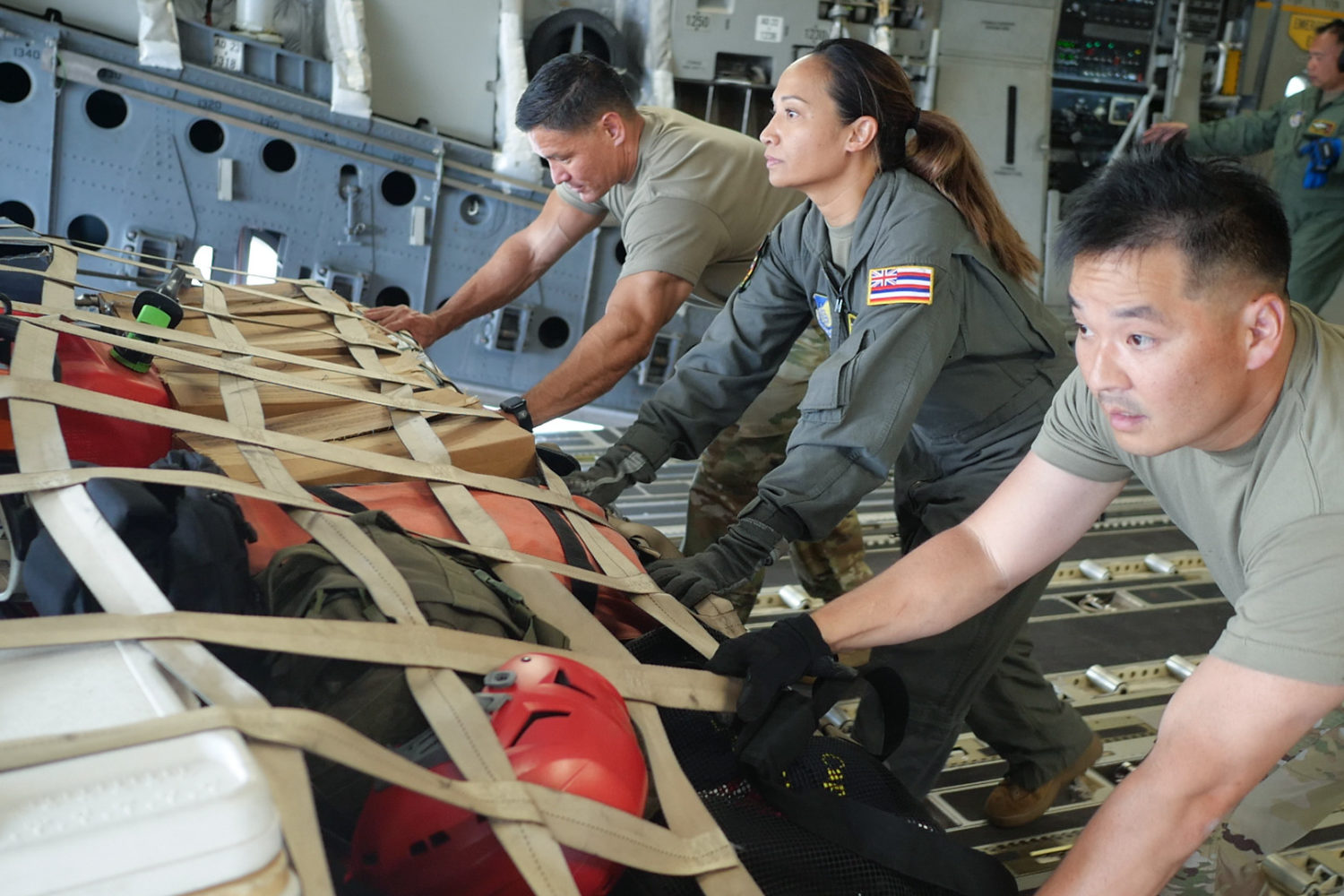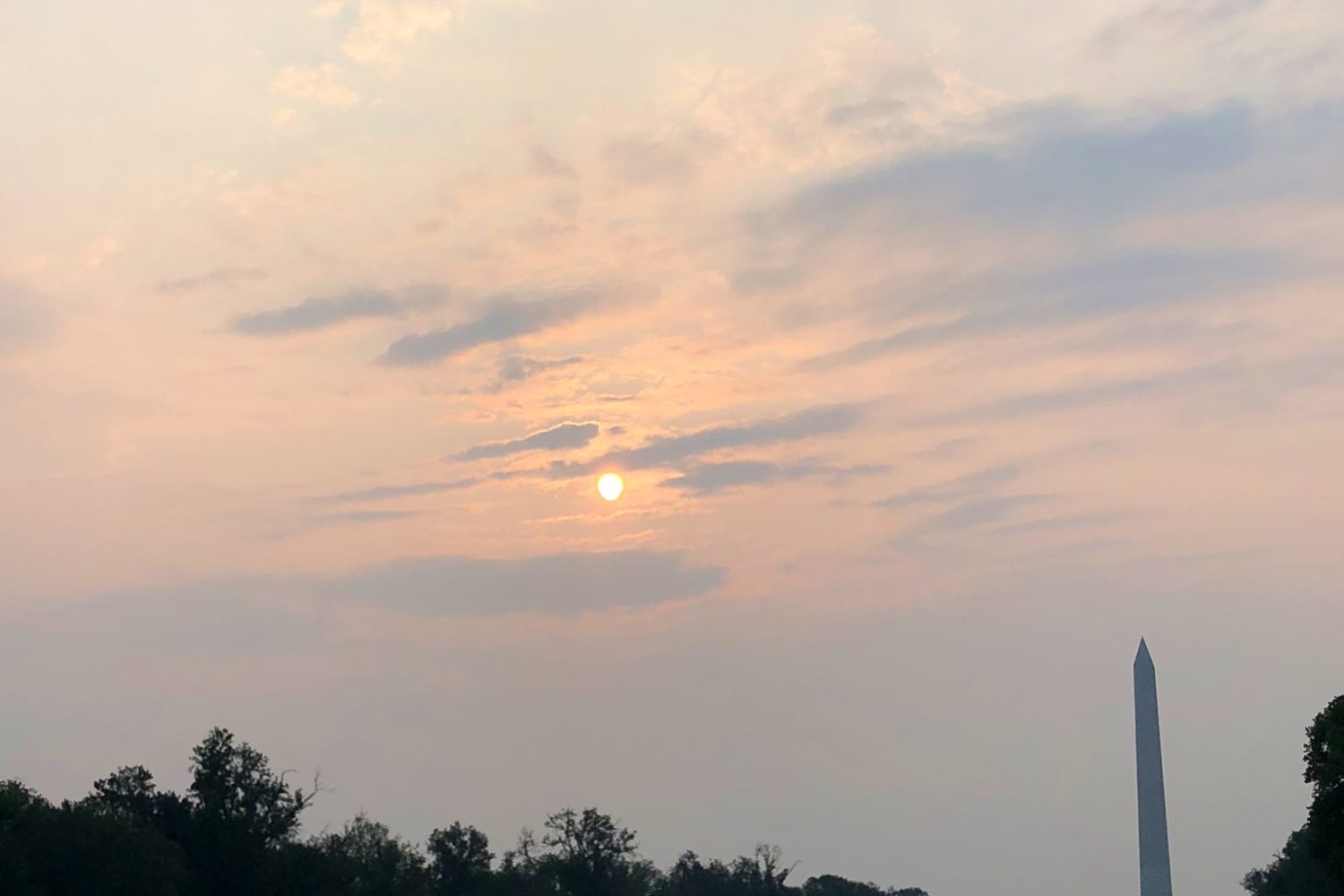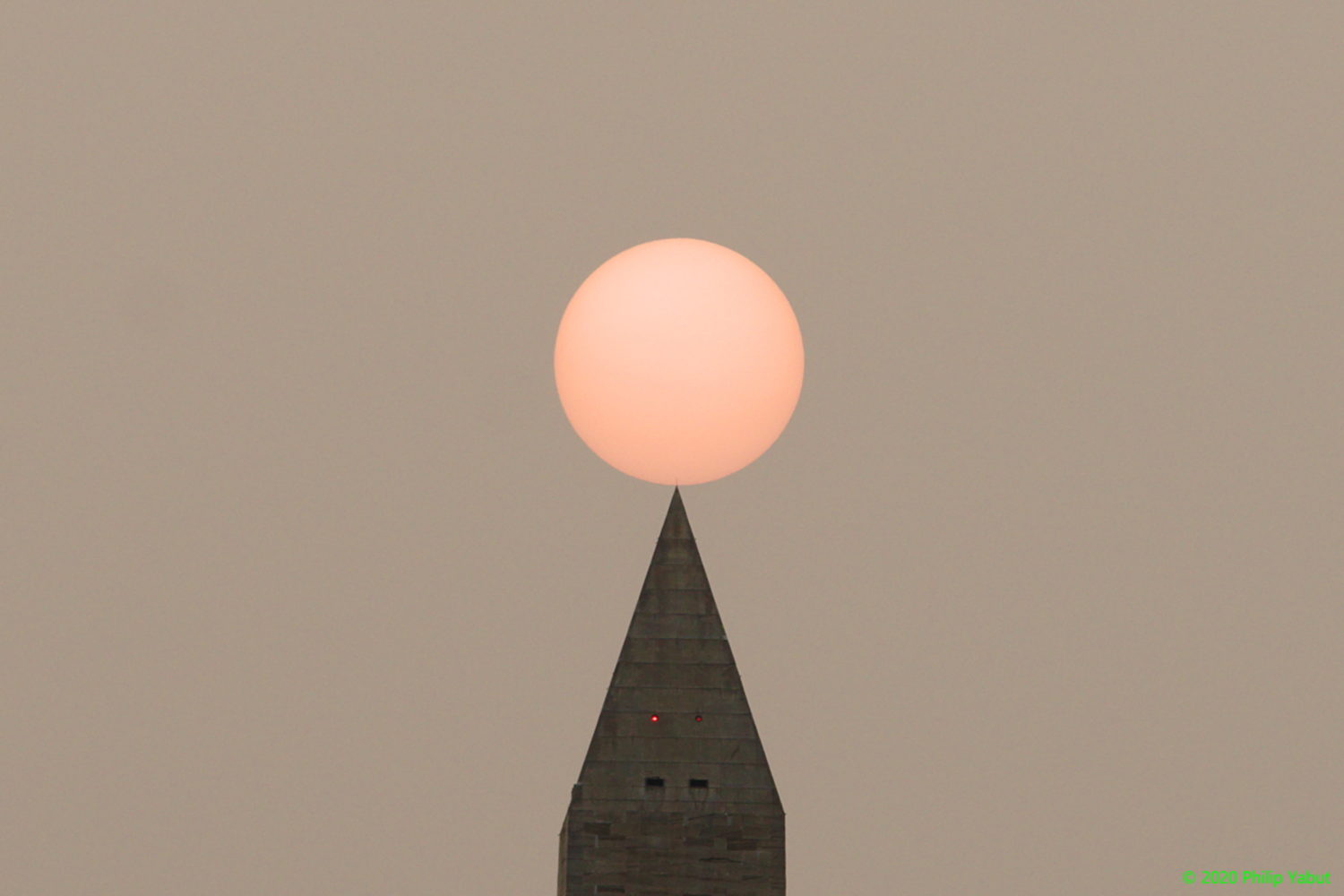Before Wednesday, I—like many Americans—had never heard of AirNow.gov, an obscure EPA website that maps air quality across the United States. Then Canada caught fire and the winds changed and I woke up one morning with a sore throat and the world looking sepia and I panicked, Googled something along the lines of “smoke map,” and landed on our MVP of this week’s apocalypse, AirNow.gov, which basically told me the air was unbreathable. Wondering how panicked I should be, I refreshed the page all day.
Apparently, I was not alone. According to an EPA spokesperson, AirNow.gov had 10 million page views on Wednesday, then 12.4 million on Thursday—blowing the site’s previous record (6.08 million) out of the water. Traffic this week was up 16,000 percent from the same period last year. AirNow.gov was, in short, a main character of the Eastern Seaboard’s horrible, horrible week, and I wanted to know what that was like. To find out, I spoke with John Millett, the communications director for the EPA’s DC-based Air and Radiation Office, which runs AirNow.gov.
I imagine this has been a very busy week for you all.
[Laughs.] Yeah.
We kind of saw it coming. Our Region I office, our Boston office, was attuned to it in early June. They tend to keep a close watch, and they put out a press release—June 2nd, I think, was when they first started to say, “Hey, take a look at this.”
And then it really became clear that because of the weather pattern, this Canadian wildfire smoke was going to blanket a large section of the Mid-Atlantic and Northeast.
That must be scary to see, given how densely populated this area is.
Yeah, we estimated on Wednesday that it was affecting about 100 million people, just based on the state populations and the smoke map at that time. We don’t usually see [smoke like this] across several states. And once you start seeing red in the forecast and purple in the forecast….
What did you do when you realized how bad it would be?
We prioritized the health information. We didn’t want people to be scared; we wanted them to be informed. So we made sure that we briefed up—we briefed our press secretary, who works for the [EPA] administrator. Then our press secretary’s office briefed up to the White House. On Wednesday, when the White House press secretary gave her opening remarks, she mentioned the situation.
In the meantime, we were getting a lot of inquiries and it’s our job to field those. Also making people aware that you can get free—and ad-free—information about air quality from AirNow.gov. It’s really just a typical communications war room.
How does AirNow.gov work?
The AirNow network is just that—it’s a network of monitors. And EPA is the hub. Many of the monitors are federal, but the lion’s share of them are state, local, tribal, and then we even have some private citizens that feed real-time data into the network. So in the literal sense of the word, it’s a Washington networking story, right? All these partners feed into our network and allow us to present a cohesive picture of the nation.
Where are all these sensors located?
They can be on the roof of a town hall, they can be at a school, at a university. Then there’s some private citizens who have the right equipment, which is a recent phenomenon.
[These sensors are] in 900 cities now. Our website says “more than 500,” but we just did a recount and it’s 900. It’s just people setting things up because they want better information for their local community, and then connecting to us so we can aggregate it and present the full picture.
What has it been like for AirNow.gov to suddenly be so in-demand?
Well, it’s a privilege actually. It’s really important for EPA to be able to deliver this information—and for a brief moment, [the AirNow app] was actually able to edge out TikTok for downloads for a little while. Now we’re back where we belong, down around number 12 I think.
There’s so much work behind the scenes to get ready [for events like this], and we hope it never happens, but we were ready to go. The network held up—it worked the way it was supposed to. I kept checking. [Laughs.] But people should be able to take clean air for granted, and we’re happy to labor in obscurity here at the Office of Air and Radiation. We really are. We don’t want the limelight—we just want clean air.
Were you responding to a lot of misinformation?
Yeah. It really gets my dander up to see misinformation out there—when we get questions or fact checks that are like, “Oh, someone says smoke isn’t harmful.” I’m like, Why are you listening to them?
That’s a real thing?
Well, I don’t want to give this person any air. I don’t want to fan them at all. But there’s this outlet that’s been a constant—I don’t know what their game is, but it’s called junkscience.com, and they seem to proceed from the assumption that bad air is actually good for people. So that’s probably the most egregious example and the one with the most traction.
On what grounds do people believe that?
I don’t know. I honestly don’t know. I can’t get into that space to understand it, I really can’t.
I understand healthy skepticism. I even get some contrarianism. That’s natural. That’s a way a lot of people process information. But when you flip the scale and you start going over to, “Ah, blow this off, this isn’t important”—when you get into that territory, that’s when we come back and we say: Listen, the overwhelming weight of science says smoke particulate matter is bad for you. We have standards on the book because of this.
Actually, “overwhelming” is an understatement on how much doctors and the public health community don’t want us breathing that stuff. But anybody can just get a Twitter channel and be the other side of the story if they want attention that way, so we’re on the lookout for that. It’s not a huge part of our day, but when we see it, that’s where we go, because it starts to erode the public health information we’re trying to get out.
Sounds like an intense couple of days.
Yeah, it was. It was intense. And we’re still cleaning up and watching. We’ll be ready if we see it again. Fortunately, [the smoke] is subsiding some today, but it may just be moving. I mean, these are big fires, and fairly remote.
It seems like fires are getting worse and worse. Is smoke the main threat to the air going forward?
Climate change overall is where we need to focus. There’s a short game and a long game. The short game is the immediate response, but the long game is that the EPA is working to reduce current levels of emissions that fuel climate change. We’re not saying “protect yourself, there’s nothing you can do about it.” We’re addressing climate change so it happens less and less in the future. We’ve got a lot of work to do.



















